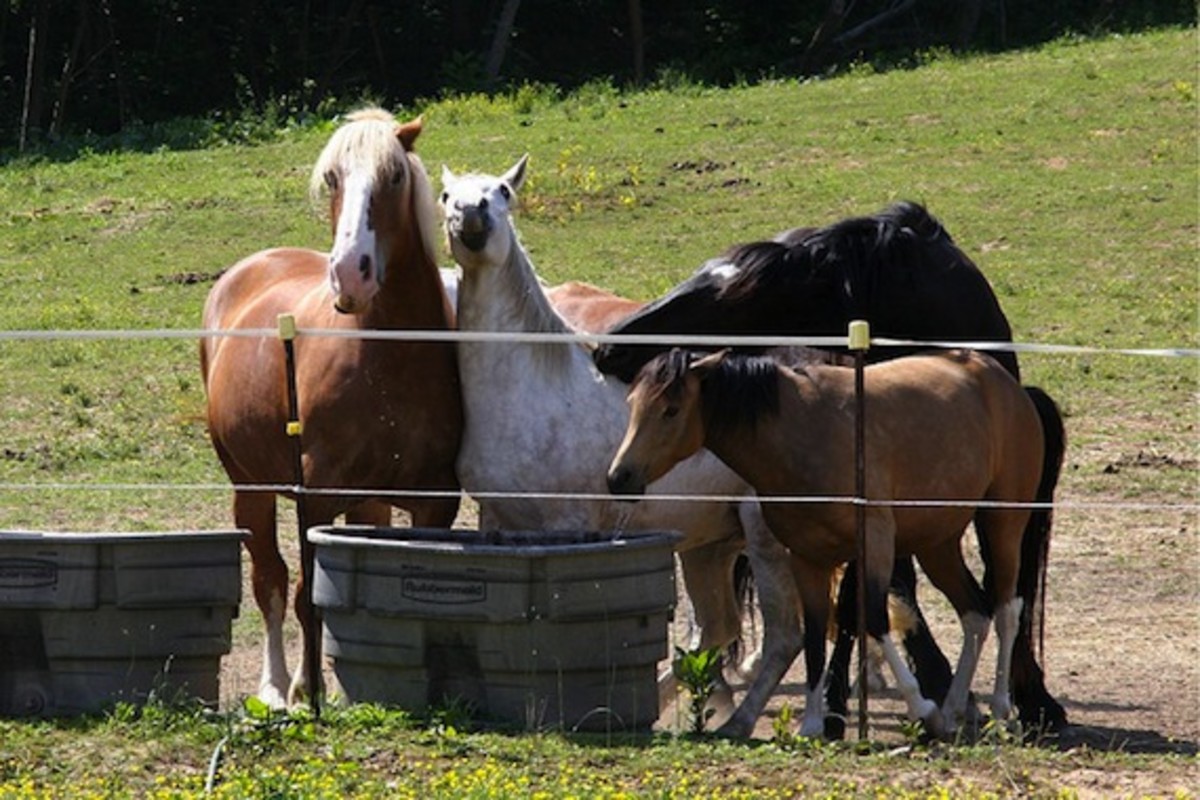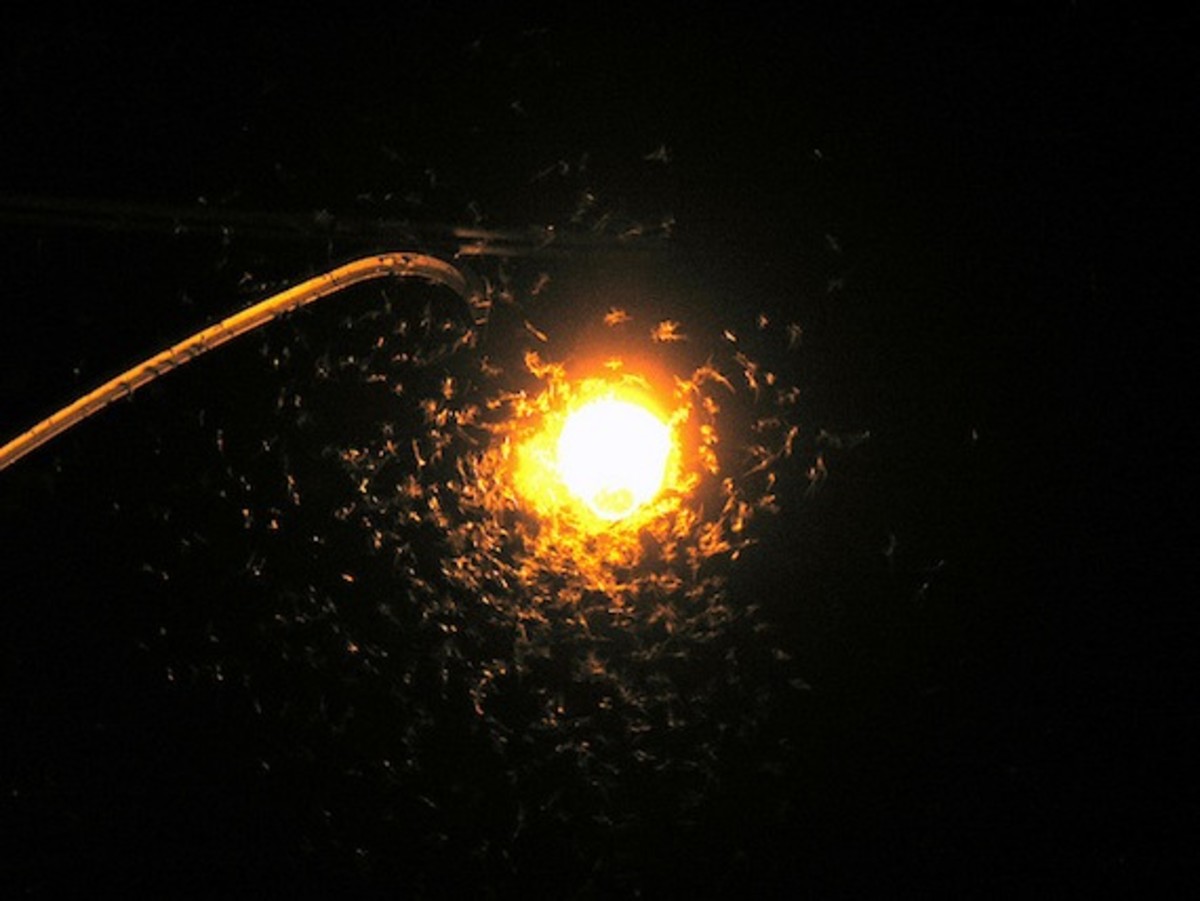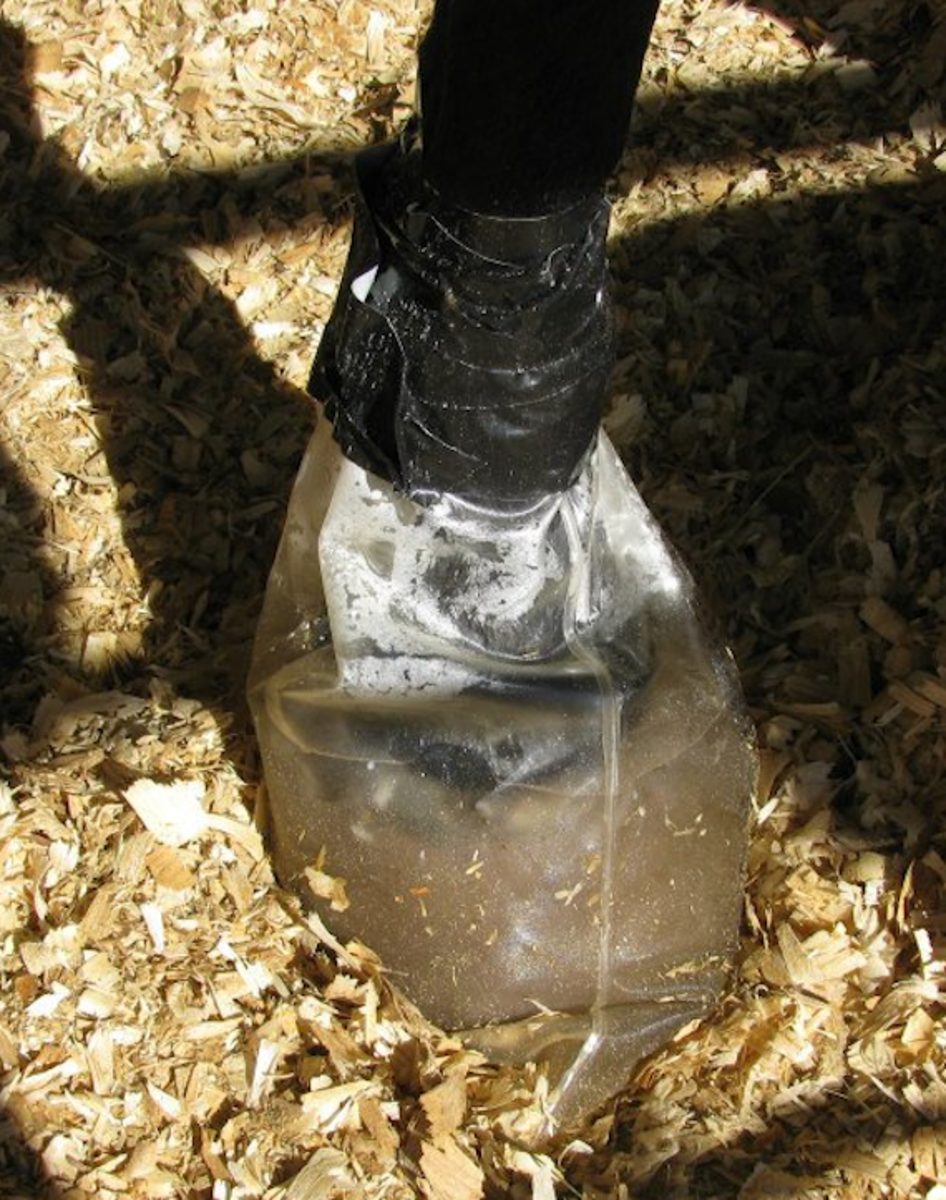Potomac Horse Fever from Missouri to New England; Cryotherapy Suggested for Laminitis Prevention When Fever Hits
- March 10, 2017
- ⎯ Fran Jurga
It’s a little early, but they’re here. “They” are the isolated reports of horses suffering from Potomac Horse Fever (PHF), a bacterial disease in horses believed to be caused by infestations of may flies and possibly other flying insects.

Potomac Horse Fever can be a mystery to many horse owners, whether they have experienced it firsthand or not. Should you vaccinate? Should you be worried? And what can you do? A few bits of information have been added to the arsenal this year, but even after almost 35 years, there is still a lot to be learned about this disease.

While there is no formal alert system for Potomac Horse Fever, the cases are just as real, and just as serious. Virginia appears to be the hardest hit so far, and the only state to issue an official warning about the disease. That warning came on Friday from the Virginia-Maryland Regional College of Veterinary Medicine in Blacksburg, Virginia, although the approximately?ten cases diagnosed so far in the state were in horses in the central part of the state, closer to Richmond, according to?Julia Hecking, DVM, of Blue Ridge Equine Hospital in Virginia.

It’s interesting to observe that many private veterinary clinics warn their clients about the disease, particularly when there has been trouble in the past in the area. The most vulnerable horses seem to be ones who live close to water, but horses that travel to shows and events can be sporadically exposed to areas where the danger may be high. The “how he got it” part of PHF is often unknown for many sick horses, some of whom live in areas where a risk would be presumed to be low.
Potomac Horse Fever is not directly related to the Potomac River, but the disease was first identified in horses in Virginia region around the Potomac River. It is also a relatively new disease, and was only discovered, or identified, in 1979. In Missouri, Homestead Animal Hospital near St. Louis currently has two cases under treatment; that clinic reports that most of the cases they see live near the Meramec River there.

Cases have also been informally reported ?this week in New York and Vermont. The northeastern United States has had a history of Potomac Horse Fever; Saratoga, New York has had a particularly active history with the disease, particularly in 2007. Weather conditions, such as river flooding and general wet spring conditions, followed by summer heat, are loosely associated with Potomac Horse Fever.
The disease can be traced to the otherwise inoffensive flies that skim along rivers and reproduce in great swarms. May flies, popular as bait for fly fishing, are typically blamed for Potomac Horse Fever, although the route of transmission is not clearly understood. Dead infected may flies can be sucked in by horses as they drink from water troughs or streams. The problem with the flies is in turn traced to freshwater snails and the gram-negative bacteria?Neorickettsia risticii (formerly?Ehrlichia risticii).
“Part of the life cycle of the fluke organism that is the vector or carrier for N. risticii goes through freshwater snails.? It is believed that larval stages of several varieties of flies ingest the fluke, and that the horse accidentally ingests the infected adult flies,” writes Dr. Hecking in the Blue Ridge Equine Clinic’s advice about the disease.
According to Michigan State University’s warnings for horse owners on Potomac Horse Fever, studies have shown that 16 to 33 percent of horses with no history of having had the disease have evidence of having been exposed to?N. risticii.
Principle symptoms of PHF are general lethargy, lack of appetite and a fever, sometimes accompanied by severe diarrhea. However, there is a wide variation in symptoms reported. If left untreated,the disease may escalate into a true medical emergency. Many severe cases have included disastrous laminitis as a side effect, while others have laminitis as the first sign that the horse is sick.
Don Walsh, DVM of the Animal Health Foundation has years of experience in treating horses with Potomac Horse Fever. As a laminitis specialist, he is very familiar with the laminitis that many horses develop with the disease. He is currently monitoring the two cases at his Homestead Animal Hospital in Pacific, Missouri. Dr. Walsh sees great promise for infected horses who are treated preventively with cryotherapy–intensive icing–to prevent laminitis.

The two cases Dr. Walsh is treating now are interesting examples of the disease. “Both cases were confirmed by fecal PCR (tests),” he said. “The first horse had been vaccinated, but the owner waited for two days after the symptoms appeared before calling us. This vaccinated horse did not have any cryotherapy treatment, nor did it develop laminitis.”
That wasn’t the case with the second horse, which had not been vaccinated. “That owner called right away,” Dr. Walsh said, referring to the amount of time that lapsed after symptoms appeared. “They started icing, and there were only mild symptoms of laminitis in the feet.”
Dr. Walsh’s advice to owners who observe horses with suspicious symptoms is to avoid laminitis at all costs. “Keep monitoring horses’ temperatures,” he advised. “And watch their appetites. If they quit eating, call the vet. Watch for dragon flies and may flies around your barn lights; they may fall into the horses’ water.”
The vaccine for Potomac Horse Fever is a good investment, in Dr. Walsh’s view. “It helps, the symptoms of the disease are not as severe,” he advised, but even if a horse has been vaccinated, it is important to call the vet and take action to save the horse from laminitis and treat the disease. “Ice the feet as soon as the fever spikes,” he stressed.
Several veterinarians have remarked that multiple horses on a property may be stricken?with Potomac Horse Fever, although sometimes not at the same time or even the same year.

Do horses die when they have Potomac Horse Fever? The answer is that sometimes, yes, they do. But veterinary medicine is improving constantly, and the vaccine is a great help. Ohio eventer Melissa Miller had two horses struck by the disease simultaneously in 2011. One had a very mild case and one was not so lucky, although he ultimately recovered from severe PHF laminitis, thanks to equine podiatry support from Dr. Bryan Fraley of Lexington, Kentucky.
Melissa has written a very interesting series of blog posts about her experiences with Potomac Horse Fever and how Finn recovered with Dr. Fraley’s help. Look in her blog archives for posts in August 2011.
Potomac ?Horse Fever is a disease that may take a while to unravel, but it is one that does not receive a lot of publicity, either for preventing the disease or for the vaccination protocol. Please share this article and make sure that you are watching your horses for unusual health signs, lameness and behavior this summer. Talk to your veterinarian, your neighbors, and horseowners in your community to find out if horses have been sick in your area.
To learn more:
AAEP Vaccination Guidelines for Potomac Horse Fever
Missouri Reports Uncommonly High Incidence of Potomac Horse Fever This Summer (2008 cases in Missouri)





